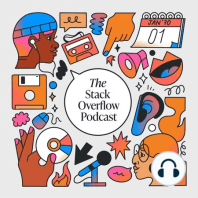67 min listen
How to Find Your Next Stop
ratings:
Length:
25 minutes
Released:
Mar 3, 2020
Format:
Podcast episode
Description
Echeruo's new venture is called Love and Magic, a startup studio that helps companies of all sizes maximize their ability to innovate. For anyone that has an idea they have been hoping to turn into a startup, Echeruo and his collaborators just introduced the Startup School of Alchemy. It's being taught at WeWork and Princeton University. It offers a six-week curriculum designed to help aspiring entrepreneurs find product-market fit.Apply with the code "stackoverflow" and you get $1000 off the course, a 40% discount.Echeruo says his time working in finance and with Microsoft Excel was what gave him the ability to think of how data from maps could be optimized by an algorithm and built into a useful mobile app. For those who don't know, our co-founder and Chairmam, Joel Spolsky, was part of the team at Microsoft that built Excel. Here is legendary 2015 talk, You Suck at Excel, where he organizes a spreadsheet to keep track of what he pays his Pokemon, ahem,I mean, uh, employees. You can take a deeper dive into the backstory of how Chinedu built HopStop below, related in his own words.I've always had difficulty with directions. When I grew up in Nigeria, I remember getting lost in my own house. It wasn’t like it was a mansion, it was a four-bedroom house. So you can imagine how I felt when I got to NYC and had to get around with the subway and bus system! I remember walking up once to one of those blown up maps in the subway station. My nose was a feet away from the dust laden map. The subway lines looked like tangled noodles. Complexity galore! New Yorkers used to walk around with these pocket guides—Hagstrom maps. I was going on a date in the Lower East Side. It doesn’t have the grid like the rest of the city. I got lost and was very late getting to the bar.I can't remember how, the date went but I remember what I did first thing next morning. I walked over to the subway station, grabbed a subway MAP and laid it on the floor and tried to figure it out. There’s driving directions. But there weren’t subway directions. So I was solving my own problems. I was looking for the complete directions—leave your house, turn left, go into this particular entrance, get on this train, get off at this station, use this exit. Because I was, in a lot of ways, the ultimate user, we ended up building a product that solved the complete problem—get me from where I am now to where I need to be. I was non-technical, I worked for a hedge fund. I may have been thinking algorithmically, I knew that this was computationally possible. But I didn’t know how to make it a reality. In conceiving the problem, I threw all the data into spreadsheets. I interned at this company when I was in college, where I learned about spreadsheets. I found the work very tedious, but I learned how to think about data, to think in tables. It allowed me to conceptualize complexity. To conceptualize the first subway data as a spreadsheet, I started by staring at the subway map laid on the wood floor of my apartment. The most obvious features were colors, lines, and stops. So those are the tables I typed into Excel first. Then I realized the lines also represented two train directions so I redid the spreadsheet. Then I realized the stops served multiple subway lines, so I redid the spreadsheet. Then I realized some of the stops would only be active during certain periods, so I redid the spreadsheet. We kept on learning and adjusting. It took us a long time before we had a data model that robustly described NYC's subway system. We even figured out how to automatically account for the frequent weekend NYC subway diversions.To build the first version of the app, I went to eLance, described to these computer scientists the data set in Excel, routes, stops, exits, entrances, and I sent it in. This developer in Siberia, Russia, emailed me, came up with a solution. But he turned out to be a complete genius, he built the core of the first version of Hopstop. Here I was, a Nigerian, sittin
Released:
Mar 3, 2020
Format:
Podcast episode
Titles in the series (100)
Stack Overflow Podcast - Episode #69: Stack Overflow Podcast - Episode #69 by The Stack Overflow Podcast by The Stack Overflow Podcast
